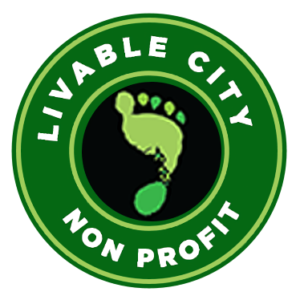May 13, 2020
Rich Hillis, Planning Director
San Francisco Planning Department
1650 Mission Street, Unit 400
San Francisco, CA 94103
Jeffrey Tumlin, Director of Transportation
San Francisco Municipal Transportation Agency
1 South Van Ness Avenue
San Francisco, CA 94103
Dear Directors Hillis and Tumlin,
On behalf of Livable City, the San Francisco Bicycle Coalition and Walk San Francisco, we write to share a set of principles that we have developed and are recommending that the City adopt as it formalizes its open streets program in connection to the present public health emergency
and a Mobility Recovery plan.
Open streets and car-free spaces can be an effective tool to address a range of challenges currently facing San Francisco, including providing appropriate space and distance for essential trips, encouraging biking, walking and transit as restrictions to the shelter in place order are
lifted, and addressing the ongoing public health threat of traffic violence. To fully realize the potential benefits and avoid unintended downsides, open streets must be planned and – implemented equitably and by engaging and empowering local communities.
It is our intent that the attached set of principles serve as a guide in developing and formalizing the City’s open streets strategy in order to optimize their use for public benefit and minimize any negative outcomes. We welcome feedback from you and your respective teams and are ready
to partner in the development and deployment of a comprehensive, citywide strategy.
Sincerely,
Tom Radulovich
Executive Director
Livable City
Brian Wiedenmeier
Executive Director
San Francisco Bicycle Coalition
Jodie Medeiros
Executive Director
Walk San Francisco
Five Principles for Open Streets in San Francisco
- Accommodate physical distancing: abide by Public Health orders and CDC guidelines
- Prioritize street segments where compliance to the Physical Distancing orders is already difficult given the existing configuration of the street, for example narrow sidewalks
- Achieve equity in terms of safe movement for Essential Activities and access to transit: acknowledge that the current public health crisis exacerbates pre-existing, structural, and historical disparities in access to basic needs, services, and transportation:
- Focus institutional support where needs are greatest
- Design solutions should first consider the most vulnerable users and those who are most negatively impacted (those with disabilities, pedestrians, cyclists, children, seniors)
- Maintain local and emergency vehicular access, especially to places of essential
business and services
- Promote all aspects of wellbeing: physical, psychological and social. Deepen neighborhood resiliency by encouraging connectedness between neighbors
- Allow for physical exercise – and other outdoor wellbeing activities –
closer-to-home; relieving crowding at destinations such as parks and beaches - Allow for families and neighbors to use their local street for flexible purposes while adhering to physical distancing
- Allow for physical exercise – and other outdoor wellbeing activities –
- Recognize that success requires community partnership and that all communities have the knowledge and capacity to lead and make change with urgency given proper institutional support.
- Align open streets with small business recovery, including outdoor space for restaurants and cafes, and expand loading zones for curbside pickup and delivery to reduce conflicts with walking, cycling, and transit.
- Promote local neighborhood ownership by allowing neighbours to opt-in
- Conduct thorough but quick outreach and engagement
- Embrace experimentation: acknowledge that Open Streets comprise one set of many critical strategies for gradually re-opening public life and economies
- Identify a range of open streets solutions that are appropriate and effective for
different phases of reopening and recovery - Establish sensible regulatory and programmatic framework that does not rely solely on law enforcement for success
- Monitor operations and iterate regulations over time. Establish effective platforms for communicating changing expectations and operating parameters
- Leverage open streets experiments to help establish norms of behaviour for safe public life
- Identify a range of open streets solutions that are appropriate and effective for



